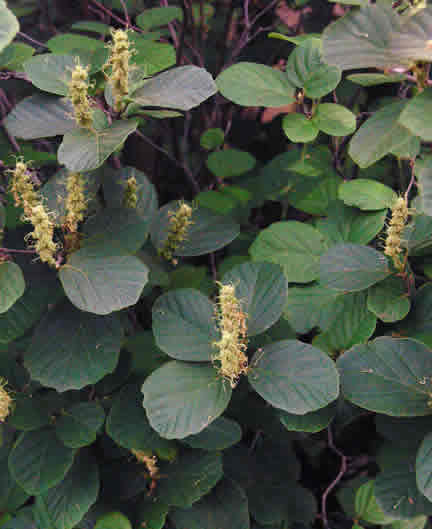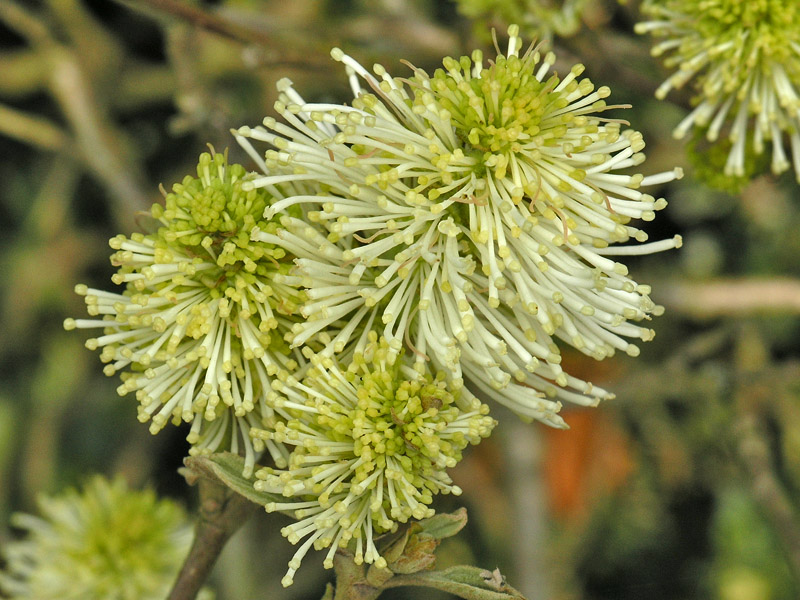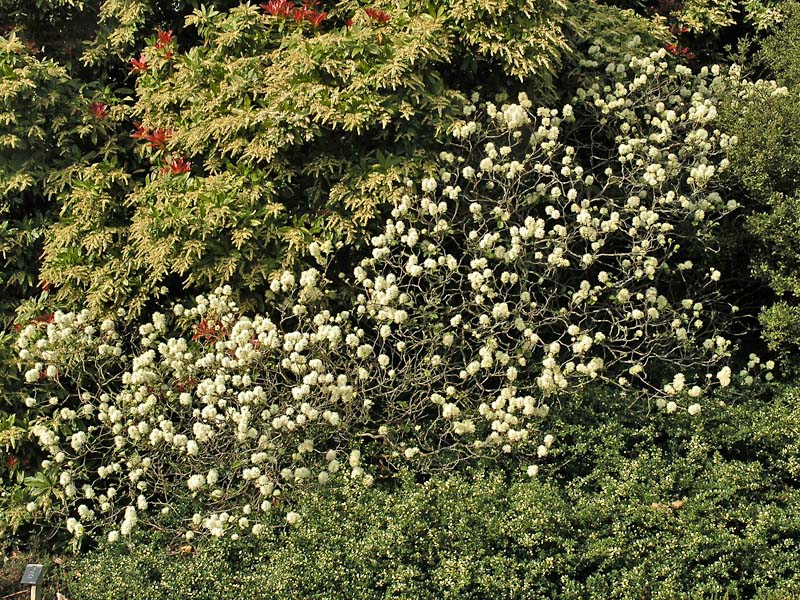| General Description | A rounded, multi-stemmed shrub with upright growing stems. The honey scented flowers appearing just before or during unfolding of leaves. A colourful display of yellow, orange and red appears in autumn adding a spectrum of colour to any landscape. |
| ID Characteristic | Rounded or oval shape with dentate margin starting half way up leaf. Have 2 different bud types, vegetative and floral. Terminal bud crescent shaped. Flowers with no petals but composed of many stamens. |
| Shape | A rounded, multi-stemmed shrub with majority of the stems growing upright and with a dense appearance. |
| Landscape | Ideally suited for specimen or mass planting in the landscape in place of the many 'exotic' shrubs that are currently underused. |
| Propagation | Seeds require double dormancy and pretreatment done in 2 stages. They need 12 months of warm temperatures followed by 3 months at 5°C. Softwood cuttings are gathered in the summer, treated with IBA quick dip and placed in peat/perlite under mist. |
| Cultivation | Usually container grown and easy to transplant. It prefers moist, well-drained and acidic soil conditions. Flowers and colours best in full sun; does well in part shade. Avoid planting in soils high in lime content. Slow to establish that thus attention must be paid to its cultural requirements. |
| Pests | The shrub is very disease and pest free. |
| Notable Specimens | A.M. Cuddy Gardens, Strathroy, Ontario, Canada. University of British Columbia Botanical Garden, Vancouver, British Columbia, Canada. |
| Habitat | Ridge tops, river banks and dry slopes in the Allegheny Mountains of the United States. |
| Bark/Stem Description | Continuous, smooth, grey-brown with dotted lenticels on stem. |
| Flower/Leaf Bud Description | Flower buds are 5 mm long, egg-shaped, hairy and grey brown. Vegetative buds rounded or oval with bud scale scars that fall off early. Terminal bud is largest and crescent shaped. |
| Leaf Description | Rounded or oval leaf shape, 5-10 cm long, alternate and simple. Dentate margin starts on the upper half of the leaf. Leaf underside has star-like tufts of hairs on veins and covered with a waxy bloom. Leaf colour is blue green to dark green. Prominent leaf venation characteristic of members of the Hammamelidaceae family. |
| Flower Description | Monoecious, apetalous and white in colour. Plush part of flower made up of numerous stamens that look like airy bottlebrush like spikes, 3-5 cm long and 2-4 cm wide. Set up as dense terminal spikes above foliage. In spring, blooms give off the scent of honey. The flowers and foliage appear concurrently and usually flowers a week later than F. gardenii. Creamy white spent flower stalks which are not unattractive may persist for several months after bloom. |
| Fruit Description | Dehiscent, enclosed small capsule, 1 cm in length, containing 2 shiny black seeds, the capsule persists throughout the summer. |
| Colour Description | The blue-green to dark green leaves change to an elegant display of shades of yellow, orange and red usually appearing all on the same leaf. Bark a smooth, grey brown. Flowers are a soft white. |
| Texture Description | Medium |



